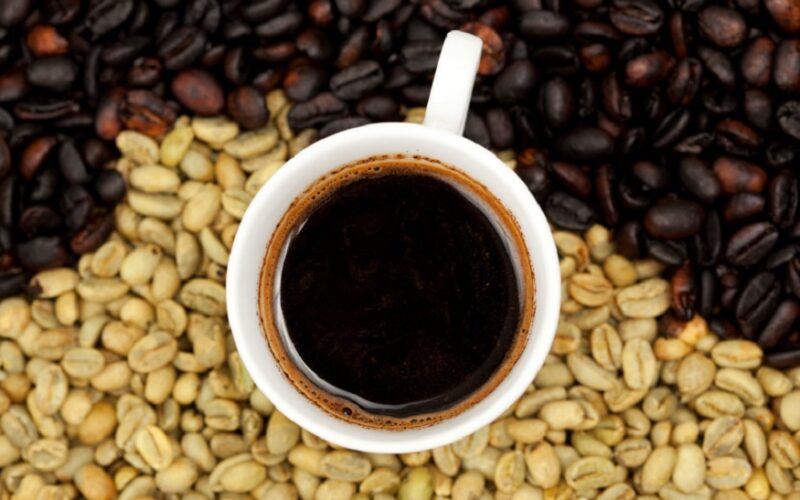Coffee roasting is an art, a science, and a talent that takes years of expertise to perfect. It can take much less time to comprehend the various roast levels and identify your preferred one as a coffee consumer and shopper. For instance, light and medium roasts are frequently seen in speciality coffees, selected to enhance the inherent flavours and fragrances of the beans, so always choose the best while buying roasted coffee beans online.
Common Roast Levels
The four primary roasting levels of coffee are light, medium, dark, and darker than dark. These four levels have a range of degrees. Roasters develop their names and descriptions for their various roast degrees due to the need for significant uniformity of roast levels across the coffee industry. This list provides popular names for each roast level and varying degrees for purchasing purposes.
Light Roast
Light roasts are the preferred option for most of the speciality coffee world since they are designed to maintain a coffee bean’s natural aromas andflavours. In comparison to darker roasts, they frequently have a lighter flavour profile. These beans typically attain a temperature of 350 to 400 degrees Fahrenheit and barely reach the first-crack stage. They have a dry, non-oily texture.
Varieties of light roasts are commonly referred to as:
- Half City
- Light City
- Cinnamon
Medium Roast
While medium roasts retain the original smells and flavours of the coffee bean, they typically swap out the brightness of a light roast for a sweet caramelization brought on by a longer roasting time. These beans rarely seem oily and continue to be very dry. They are heated to 400 to 430 degrees Fahrenheit, yet they never penetrate the second crack entirely.
Varieties of medium roasts are commonly referred to as:
- City
- American
- Breakfast
Dark Roast
These beans typically reach the second-crack stage at temperatures between 430 and 450 degrees Fahrenheit and have an oily, dark brown colour. At this point, the inherent scents and flavours of the coffee bean are replaced by the taste of the roast itself. As a result, low acidity and a robust, fuller flavour character are produced.
Various types of dark roasts are commonly referred to as:
- Full City
- Vienna
Darker than Dark Roast
Coffees labelled as New Orleans, Italian, French, and continental use beans that have been roasted so darkly that the natural flavour has wholly vanished. These beans taste ashy and glossy and contain a lot of oil, and this level of roast is not used in speciality coffee shops.
The Caffeination Myth
Because of their robust flavour profile, you’ve probably heard the widespread misconception that dark roasts have more caffeine than lighter roasts. Due to a difference in bean density, light roasts have a tiny edge over dark roasts regarding caffeine content. A dark-roasted coffee bean weighs less and has less caffeine because its total density decreases as a bean roasts longer.
This imbalance is fixed by weighing coffee while measuring it. This negligible difference in caffeine content, which most people hardly detect, is only present when measuring coffee by volume (for example, by scoops). The only elements that can significantly alter the caffeine content in a coffee are dosage and preparation.
The Roasting Process
Technological advances in roasting equipment changed the coffee-roasting process by adding automated features to monitor and control each step. However, the traditional roasting method — before the availability of automated roasting equipment — requires skill in both sight and sound to judge when to stop this process. Here’s an overview of how expert roasters use both of those skills:
Sight
Roasting changes the colour and texture of coffee beans; these visual cues can help indicate the beans’ progress through the roasting process. For example, lightly roasted coffees look slightly brown with no oil on the surface, while dark-roasted coffees appear dark brown and shiny. Experienced roasters use their sight to help determine a coffee bean’s exact point in the roasting process.
Sound
These cracks signify critical stages of the roasting process. For example, medium and light roasts finish between the first and second cracks, while dark roasts finish after the second crack.
A Brief History of Coffee Roasting
So how did coffee roasting develop into a sophisticated, contemporary industry? Although humans first began to roast coffee beans over 1,000 years ago, it was in the 1400s that coffee-roasting technology was developed. Before businesses began roasting beans in large numbers and selling pounds of bagged coffee as a commodity, it took another 400 years until sometime in the 1800s. Sales of commercially roasted coffee outpaced coffees roasted at home throughout the 1900s, launching the current coffee business.
The days of needing dark roasts for every green coffee bean are long gone, thanks to micro-roasters renowned for their expertly roasted beans. Today, roasted coffee for commercial purposes means something far more complicated. It is more crucial than ever for modern roasters to have the knowledge necessary to choose the ideal roasting temperature for the beans.
Conclusion
Many coffee brands are available in the market, claiming to be the best, making it challenging to choose the best coffee brand. MyNiwa is an online platform bringing up the best quality organic coffee bean brands on a single platform. You can buy coffee online of premium quality from MyNiwa.

